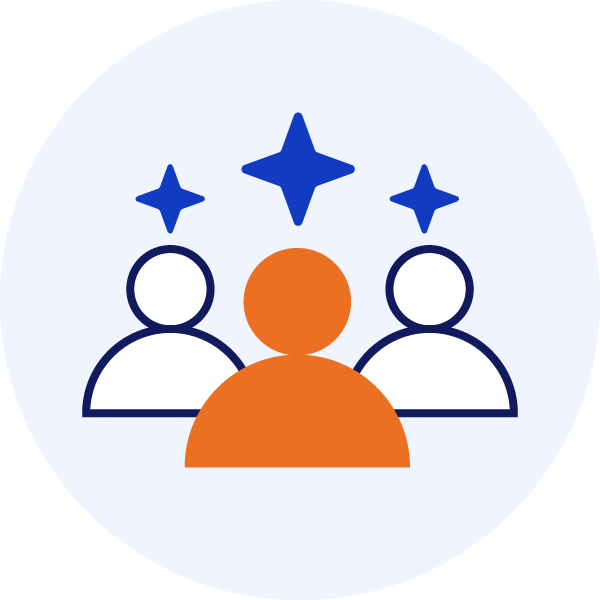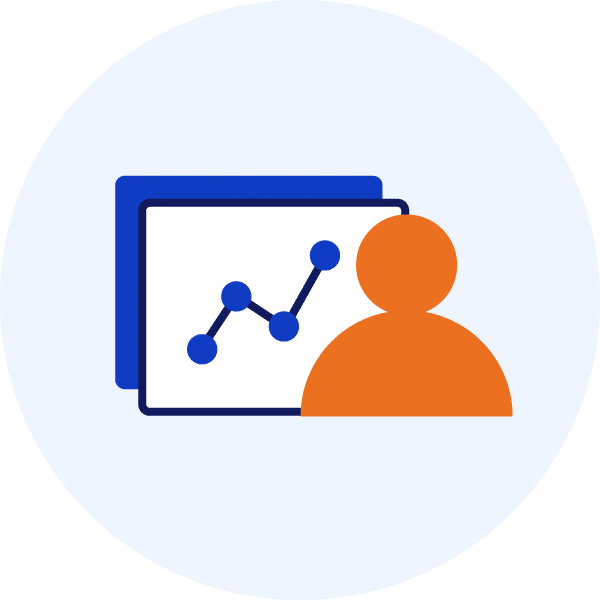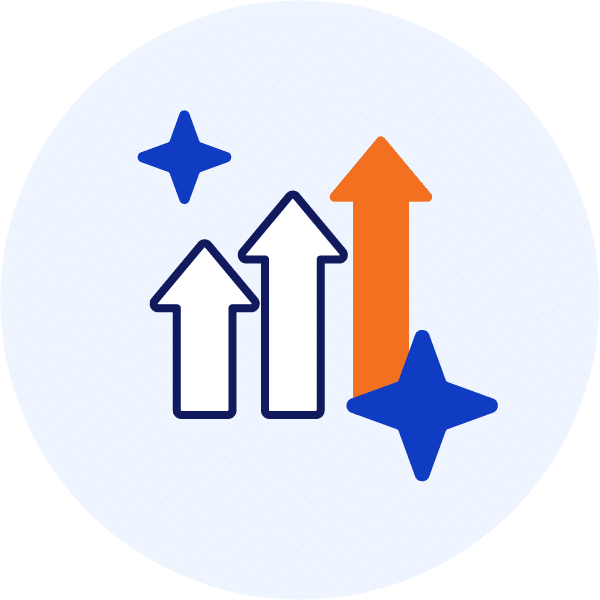
Break free from resource constraints and high costs
For home-based care organizations, it’s vital to keep up with industry changes to offer top-notch services. This means regularly updating strategies, evaluating current systems, and adopting new tools to meet increasing demands. Staying ahead in this competitive market ensures the best care for clients.
This guide is your go-to for navigating industry challenges and ensuring your organization’s survival and growth. It offers strategies for financial stability and decision-making insights to distinguish your organization.
What to expect in this guide
Gain insights into industry challenges and learn strategies for innovation under constraints.
Discover actionable tips for retaining staff and fostering a culture of engagement to address turnover challenges.
Learn how to optimize operations for productivity and efficiency using software tools and automation.
Understand the importance of leveraging data-driven insights for continuous improvement and enhancing client outcomes.
Have access to practical tools and solutions to streamline processes, improve decision-making, and deliver exceptional care.
3 reasons to start tackling inefficient operations today
1. Demand is rising, but organizations have limited resources
The global demand for home-based care market is rising, projected to grow from $288.38 billion in 2023 to $505.81 billion by 2030 at a compound annual growth rate of 8.4%. This surge in demand coincides with an aging American population that will require an additional 3.3 million health care professionals and support staff by 2030.
Yet, despite this promising growth, the industry faces significant hurdles. High inflation, clinical staffing shortages, and operational costs drive health care expenditure growth to exceed economic growth.
This imbalance presents a clear challenge: how can home-based care organizations meet the rising demand while battling resource limitations?
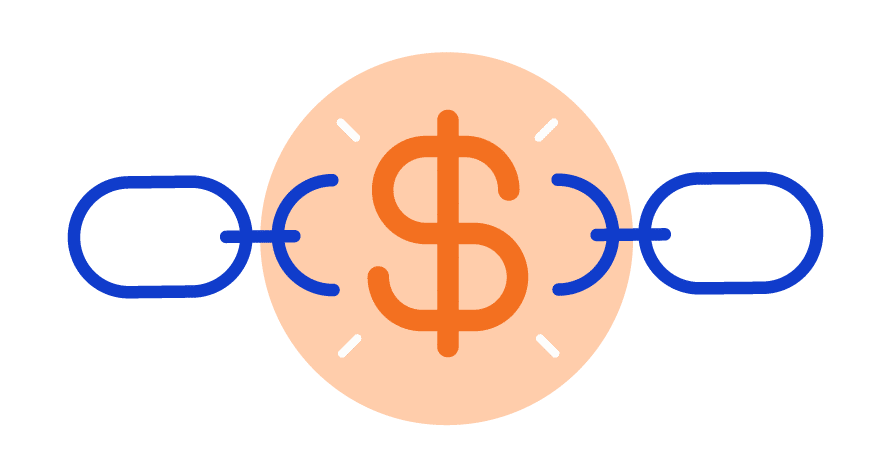
2. Challenging times create an opportunity to evaluate your current business structure
Thriving in this challenging environment involves:
- Tapping into the $1 trillion improvement potential by redesigning organizations for speed.
- Reshaping portfolios.
- Innovating new business models.
- Reallocating constrained resources.
But how can organizations innovate under constraints? Harvard Business Review suggests that embracing constraints can fuel creativity and innovation. Researchers found that individuals, teams, and organizations benefit from a healthy dose of constraints. When these challenges become too high, they stifle creativity and innovation.
3. The industry needs new business models to thrive
“The old business models aren’t good enough anymore. We need value, courage, a focus on results, and a willingness to challenge the status quo,” said AlayaCare CEO Adrian Schauer, who highlighted the need for a shift in business models during his keynote at the Better Outcomes User Conference 2023. In other words, we must do more with less.
Finding quality caregivers in an era of low unemployment and high inflation is increasingly challenging. Healthcare systems recognize the need to move care into homes but need help funding sustainable models. As Adrian mentioned during his keynote, public trust in institutions, including businesses, is also at a record low.
With the right approach and tools, home-based care organizations can survive and thrive in this changing landscape. It’s time to turn these challenges into opportunities for growth and sustainability. Our guide offers strategies and insights into embracing constraints, innovating within limitations, and building sustainable business models that can withstand economic fluctuations and resource shortages.

Chapter 1
Best practices to retain staff and foster a culture of engagement
The caregiver shortage and high turnover rates in the home-based care industry are a constant struggle for organizations. The turnover rate is about 80%, and replacing an employee can cost over $4,500 USD in resources. So, the big question is, why is the turnover rate so high in this industry? How have other home-based care organizations tackled this problem successfully?
- #1 reason caregivers leave is lack of communication from the office
- One of the other top reasons caregivers leave is pay and benefits, followed by lack of hours or inconsistent hours.
- When vetting a potential employer, prospective employees’ top three considerations were pay and benefits, enough hours/consistent hours, and commuting time.
The impact of caregiver churn
Let’s crunch some numbers first to find out why caregivers and other staff choose to leave their jobs. We collaborated with Home Health Care News (HHCN) to survey home-based care providers about the main reasons for churn in their organizations and what they’re actively doing and investing in to retain and recruit.
The good news is that most home-based care providers are aware of why their employees leave, and the survey suggested that these organizations plan to implement changes to address them.
Stephen Tweed, founder of Home Care CEO Forum, joined us for an episode of our Home Health 360 podcast. He said that in addition to pay and benefits, there are three major causes of caregiver turnover that have very effective solutions available:
- Lack of effective processes: A lack of robust, well-documented processes can lead to operational inefficiency and frustration, ultimately causing caregivers to leave.
- Inadequate attention to caregivers: Caregivers may need attention and appreciation from the back office. It can lead to feelings of neglect and subsequently cause turnover.
- Bad hiring decisions: Hiring underqualified candidates to fill a caregiver deficit can result in subpar performance and client dissatisfaction, leading to increased turnover.

In the home-based care industry, we’ve also seen providers grappling with extensive administrative tasks like documentation, billing, and scheduling – which are repetitive, manual tasks. AlayaCare’s CEO Adrian Schauer said in his 2023 predictions that the industry must get on top of repetitive tasks.
I think we’ve drilled home enough about why and how there is churn in the industry, but now let’s get on to the good stuff: how to create a culture of engagement and retention.
5 tips to retain your staff and foster a better work environment
1. Create a culture of trust with effective communication
“Caregivers will go where they are most supported, most heard, and have the tools to do their work.” – Jennifer Maxwell, CEO and Co-Founder at Maxwell Healthcare Associates, Episode 6 of the Home Health 360 Podcast
Effective communication between caregivers, staff, and management is pivotal to this. By actively listening to their concerns and demonstrating that their opinions matter, you create a supportive culture that promotes loyalty and reduces turnover rates. A responsive and attentive approach fosters trust and belonging within your team, empowering caregivers to deliver exceptional care while forging strong bonds within your organization.
How to ensure effective communication with caregivers:
- Implement a caregiver mentor program: This initiative, which pairs new caregivers with experienced ones, not only fosters a supportive environment but also enhances skill sharing and boosts staff confidence, leading to improved care quality and job satisfaction.
- Communicate for more than just work logistics: While logistical conversations are necessary, engaging in dialogues that build relationships and show genuine concern for your caregivers is crucial. This personal communication can significantly improve relationships and job satisfaction.
- Utilize mobile communication tools: Embrace modern communication tools like secure messaging on caregiver mobile apps. These tools can simplify and enhance interactions, making it easier to stay connected and address issues promptly, thereby improving your team’s efficiency.
- Schedule time blocks for communication: Regularly scheduled times for emails, texts, and calls can help manage workload and ensure consistent communication between managers and caregivers.
- Be present: Managers showing empathy and attentiveness during conversations can foster trust and stronger relationships.
2. Use a better scheduling process to improve visits and commuting time
Effective scheduling and manageable commuting are critical components of caregiver retention. A well-structured schedule respects the caregiver’s time, reduces burnout, and promotes a healthy work-life balance. On the other hand, reasonable commuting is vital, as extensive travel times can lead to fatigue, decreased job satisfaction, and, ultimately, higher turnover rates.
Home-based care software with automated scheduling accompanied by advanced algorithm capabilities can save schedulers hours compared to manual methods and ensure every caregiver gets consistent hours. Regarding commuting time, software with visit optimization tools can configure the scheduling workflow to minimize travel time, saving hours of driving.
With improved scheduling and commuting, caregivers can focus more on delivering care and less on administrative tasks.
3. Invest in training and career development
Training and development play a significant role in caregiver retention. Comprehensive training equips caregivers with the necessary skills and boosts their confidence and job performance. Ongoing professional development fosters growth and progression, strengthening their loyalty to the organization and reducing turnover.
For example, Home Care Pulse (HCP) found that better training increases caregiver retention. Caregivers with 6 or more hours of orientation had a higher retention rate than those with lower. Moreover, those who had 8 or more hours of ongoing training had a higher retention rate than those who had less than 8 hours of training.
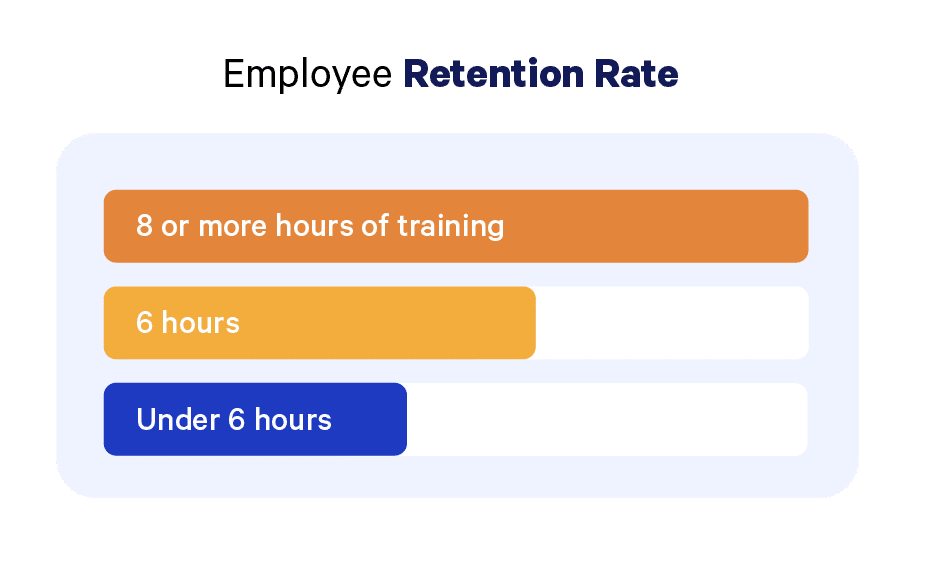
“In some states, caregivers can provide care after just a few weeks of training. As a result, they’re thrust into the ‘real world’ to care for real people with real illnesses and they are NOT prepared. They can quickly feel overwhelmed. And an overwhelmed caregiver is much more likely to quit.”
Home Care Pulse
Therefore, investing in efficient caregiver training is crucial to creating a supportive and empowering environment that enhances retention.
Quick tips
Train and upskill your caregivers: Regular training sessions enhance caregivers’ skills and show them they are valued and their professional development matters.
Invest in a robust onboarding program: A comprehensive onboarding process can equip new hires with the necessary tools and knowledge to succeed, boosting their confidence and job satisfaction.
Consider investing in caregiver training programs: Some companies exist specifically to help with caregiver training, which is incredibly helpful for organizations that need more time or resources to set up training modules.
Regular tech training: Caregivers should fully use their daily work software. Proper training can boost work speed and happiness. Many tech companies offer training to help users get the most from their tools.
4. Recognize and reward your employees’ hard work
By recognizing and appreciating the unwavering dedication of your care workers in delivering exceptional services to clients, you cultivate a sense of value and purpose within your team. Empowering your caregivers through recognition enhances their job satisfaction and supercharges their performance, leading to improved outcomes for both clients and your organization.
Creative strategies and tools to boost caregiver satisfaction
As the workforce continues to scale, home-based care providers must adapt to slumps in caregiver satisfaction with the appropriate tools and strategies.
5. Empower caregivers with mobile apps and better task management
Innovative home-based care systems and software solutions have revolutionized how care workers manage their tasks. To ensure the highest quality of care, providers must equip their caregivers with the necessary tools to excel. These advanced technologies give care workers access to real-time information, enabling them to be better informed and prepared for client visits.
For example, a well-designed mobile app can revolutionize how caregivers manage their time and tasks. GPS-based mobile care management systems can streamline client care, while electronic visit verification and record-keeping eliminate hours of manual work.
Technology presents everything a caregiver needs to know about each client, including medical information and notes on potential issues before an appointment. Real-time communication between caregivers and office staff also ensures accurate, fast data collection and reporting -transparency that helps build trust between caregivers and their employers.
Key takeaways – Chapter 1
Retain staff and foster a culture of engagement
Efficient scheduling and minimizing commuting time through software tools can enable caregivers to focus more on delivering care.
Investment in comprehensive training and ongoing professional development significantly impacts caregiver retention.
Recognizing and appreciating caregivers’ efforts boosts their job satisfaction and performance, ultimately benefiting both clients and the organization.

Chapter 2
Enhance client outcomes and satisfaction with smarter decisions
Providers face the challenge of balancing quality of care with the cost of home-based care services, especially when resources are limited. Quality care involves personalized attention, timely assistance, and a focus on improving the client’s overall well-being, which can often require additional resources. Providers must make informed decisions about spending and resource allocation based on their clients’ needs and preferences without resorting to drastic cost-cutting measures that can negatively impact client outcomes and satisfaction.

Home-based care providers can deliver high-quality care by allocating assets wisely, enhancing client outcomes and satisfaction, and ensuring long-term sustainability.
5 ways to improve client experience
1. Consider clients as consumers
It is crucial to consider clients as consumers and heed their expectations and needs. Today’s clients are knowledgeable, tech-savvy, and actively involved in their care decisions. They expect a service that matches what they receive from other industries. According to this Forbes article, 75% of consumers want the same experience in health care as they get elsewhere. Therefore, understanding the client as a consumer, not just a client, can significantly improve their experience.
2. Harness the power of client feedback
Your current clients are the most valuable source of referrals, and they can help you identify areas for improvement. Engage with customers to request reviews and feedback and stress the value of their opinions. You can enhance client engagement by conducting surveys that provide valuable insights into the client experience. The questions in the survey should be specific and detailed, aiming to collect actionable information about their satisfaction with your service, areas for improvement, and their relationship with caregivers.
3. Provide transparency and engagement
Transparency is a cornerstone in the journey towards improving client outcomes and satisfaction. A family portal serves as a powerful tool for promoting transparency and engagement. It empowers family members and loved ones to stay connected and informed about the care process, amplifying their involvement and continuity of care. While technology facilitates a two-way flow of information, the key lies in personalizing the approach and prioritizing immediate interaction with clients to enrich their experience further.
4. Become adaptable and provide more personalized care
Home-based care providers are most successful when they’re adaptive to the changing needs of their clients. Personalized care, tailored to each client’s unique needs and preferences, can significantly improve their experience and satisfaction. Additionally, matching clients with the right caregivers can lead to better outcomes.
For example, using scheduling software that has capabilities of client-caregiver matching based on qualifications, criteria, and client preferences can make a big difference in your ‘ experience.
Evaluate and improve the overall experience you’re delivering to clients with our 8 steps to improving client experience guide. This guide is co-created by AlayaCare and Home Care Pulse (HCP) and designed to help home care organizations evaluate and tweak the overall experience they deliver to clients.
5. Measure data that reflects client experience and outcomes
Leaders in home-based care understand the importance of using innovative methods to measure their clients’ experience. This involves collecting data on various aspects, such as the quality of life, overall health, timeliness, active participation in care, and interaction with different touchpoints within the system. By doing so, they can enhance client care, identify improvement areas, allocate resources efficiently, and improve satisfaction and outcomes.
Partners in Community Nursing put these practices to the test. They leveraged technology to provide personalized care, resulting in a 25% reduction in hospital readmission rates and an 83% client satisfaction rate. Home-based care providers can significantly improve client outcomes and satisfaction by focusing on the client experience, even when resources are constrained. Watch the video to hear their story:
Key takeaways – Chapter 2
Enhance client outcomes and satisfaction
Understanding clients as consumers, being attentive to their feedback, and acknowledging their changing needs are pivotal for enhancing client outcomes and satisfaction in home-based care services.
Technological tools like family portals and scheduling software can significantly improve client experiences by enabling two-way communication, increasing family involvement, and matching clients with suitable caregivers.
Measuring data reflecting clients’ experiences and outcomes is essential for effective management. This data includes quality of life, overall well-being, timeliness, and active participation in their care.

Chapter 3
Optimize operations to maximize productivity and efficiency
Optimizing operations is paramount for home-based care organizations, especially when they’re grappling with limited resources:
- It ensures continuity and quality of care, as inefficient operations could lead to compromised service or even gaps in care provision.
- It promotes workforce efficiency, preventing scenarios where staff are overworked or schedules clash due to poor management.
- Optimizing operations allows these organizations to provide timely, effective care, enhancing patient satisfaction and trust.
- It ensures financial sustainability by maximizing the use of available resources and reducing wastage.
Therefore, in a resource-constrained environment, operational optimization is not just a strategic move but a critical necessity for home-based care organizations to thrive and deliver exceptional care.

Tools to optimize operations with limited resources
Operating with limited resources is a common challenge for home-based care providers. However, these organizations can efficiently optimize their operations by strategically implementing specific tools and processes. Here are some strategies:
1. Exchange data and information between systems to make better-informed decisions
Quick definitions
Integration: the process of connecting one software application with another, typically through their application programming interfaces (APIs).
Interoperability: the basic ability of different computerized products or systems to readily connect and exchange information with one another, in either implementation or access, without restriction.
Through integration, you can achieve interoperability.
Interoperability and integration tools can significantly optimize back-office operations by cutting down on duplicate entry tasks. Here are some examples:
Example:
Think about this: You manage home-based care services and coordinate with primary care providers, specialists, and acute care systems. It’s a lot to handle, isn’t it? The risk of miscommunication over missed information or even errors in record-keeping can increase exponentially. But there’s a solution.
Imagine if all these systems could ‘talk’ to each other seamlessly via a Health Information Exchange (HIE). This integration would drastically improve coordination, reduce gaps in care services, and minimize the risk of errors.
Here are the benefits you stand to gain:
- Enhanced coordination: Seamless communication between home-based care, primary care, specialist, and acute care systems.
- Reduced gaps: No more missing details or overlooked information – everything is in one place.
- Simplified record-keeping: Digital records are easier to manage and more legible than handwritten ones.
- Reduced errors: With automated data transfer, the risk of human error drops significantly.
This digital transformation isn’t just about efficiency; it’s about providing the best possible care to your clients. Integrating your systems through an HIE can save time, reduce errors, and improve service coordination.
How do I know if my software has integration tools and interoperability? Does the software provider…
- Have a list of third-party vendors that have built integrations?
- Do you understand what subscription level those third parties require for the integration to work? For example, if the integration is with HubSpot or Salesforce, is an enterprise-level account needed to access this feature?
- Have other clients who have built custom additions through their third-party developers?
- Allow you to accomplish workarounds with middleware? For example, can you integrate a Google sheet from which software like Zapier can pull data efficiently?
- Provide you with a technical advisor? Many solutions need real APIs, so building your integrations can be messy and tedious.
2. Save on hours of repetitive work with automation so you can focus on other tasks
Automation tools within the software are another way home-based care organizations can improve their operations and workflows. It can free up valuable time and resources by reducing manual tasks that take up daily hours.
Some examples of tasks that can be automated using software include:
- Intake and scheduling: Reduces the time required to manage patient information, enabling staff to focus more on delivering care.
- Billing and revenue cycle management: Minimizes the risk of errors, speeds up payment processing times, and improves cash flow.
- Documentation and record-keeping: Ensures that patient information is accurate and up to date, reducing the need for manual data entry and minimizing the risk of errors.
Success stories in optimizing operations
Two case studies have demonstrated the advantages of using automation with AlayaCare Cloud’s Connector to simplify community and social support services. Canadian service Helping Hands Orillia saved 50+ hours of manual labor by automating appointment reminders.
Similarly, North Country Home Services in the US achieved a 10% improvement in client-related processes, an 84% decrease in bad debt, and a 12% improvement in Electronic Visit Verification (EVV) use. As a result, the state reimbursement rate exceeded 95%, and the return on investment was an impressive 172%.
3. Spend less time searching for the information you need within a large software system
Outdated software systems can lead to inefficient search processes and decreased productivity among staff. Custom reporting tools can provide easy access to all data within the system, facilitating swift audits, searches, analyses, and investigations. This can save time and reduce frustration, as staff can easily filter and organize data according to their needs.
With a software system that offers custom reporting tools, you can expect:
- Centralized and consolidated views to reduce the number of screens a user needs to navigate.
- Everyone works from the same source of truth, promoting consistency and accuracy.
- Reduced time spent searching for information, so now staff can focus more on their tasks, boosting productivity.
- Central monitoring allows the organization’s headquarters to track progress across all branches easily.
In essence, providers who adopt a system with custom reporting tools should expect to see more productive and efficient staff. Why? Because when less time is spent searching, more time is spent doing.
Key takeaways – Chapter 3
Optimize operations to maximize productivity and efficiency
Home-based care organizations can significantly improve their operations by integrating digital tools. This can reduce errors, enhance service coordination, and automate repetitive tasks such as intake, scheduling, and record-keeping.
Implementing strategies like these has yielded success stories, such as Helping Hands Orillia and North Country Home Services, which saw remarkable improvements in operational efficiency and return on investment.
Custom reporting tools within software systems can facilitate efficient information retrieval, promote accuracy, and boost productivity. This enables staff to spend less time searching and more time working, ultimately enhancing the quality of care provided.

Chapter 4
Continued improvement through data-driven insights
The aim of continuous improvement is operational excellence – establishing a working method that consistently improves care quality and safety.
A data-driven approach to continuous improvement can help home-based care providers stay ahead of the competition by constantly innovating and improving their offerings. Leveraging data allows providers to become more efficient, make better decisions, and develop their human resources.
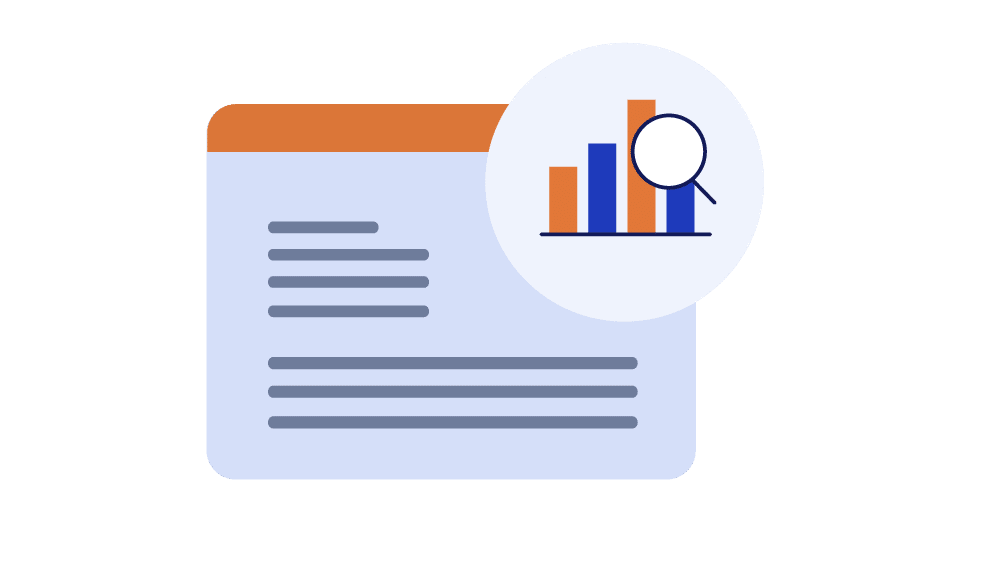
How to implement continuous improvement using data-driven insights
Utilizing key metrics and reports helps monitor the provider’s performance and aids in decision-making. Data on caregiver utilization, client satisfaction, and client outcomes can provide valuable insights into areas that need improvement.
1. Reports on early warning signs for churn
By monitoring and analyzing data related to client interactions, complaints, and service usage patterns, providers can identify early warning signs for churn. Using AI and advanced algorithms, satisfaction scores pinpoint causes of churn, examining factors including caseload quality and employee-preferred scheduled hours. This can help identify trends and take preventative action regarding churn. Proactively addressing these issues can enhance client retention and satisfaction.
To prevent skilled staff from leaving, it’s important to measure and assess early warning signs of churn, such as increased lateness, incomplete note-taking, fewer home care shifts, and more. A strong software system can help you stay on top of these metrics and proactively support employees when they need it most.
Actionable steps could include proactively identifying employees at risk of churn to understand their pain points and implementing customized mitigation strategies. Access to regular shift offer reports can empower schedulers to offer caregivers more suitable vacant shifts, leading to higher job satisfaction.
2. Margin reports to show growth
Margin reports can provide insights into a provider’s financial health. They show revenue versus costs, helping to identify areas where spending can be reduced without compromising the quality of care.

Financial departments pay close attention to the margins, where gains are often won or lost. Metrics can fuel different reports that offer specific perspectives depending on what a provider is after. With the right software, you can access the metrics you need. For example, with AlayaCare’s platform, you can quickly get detailed profit reports, including caregiver travel and extra hours. Do you want a daily, weekly, or monthly report for each visit? You can get that, too! It helps you see the cost of client visits in any area.
3. Client satisfaction reports to monitor quality of care
Whether positive or negative, client feedback is a telling data point to capture. It helps ensure a provider listens to clients’ needs and quickly responds with changes where necessary. AlayaCare, for example, enables agencies to run reports that accurately track client feedback, revealing behavioral patterns in care and identifying service issues before they spark significant problems. Positive feedback motivates caregivers, leading to happier clients and more referrals, benefiting the business.
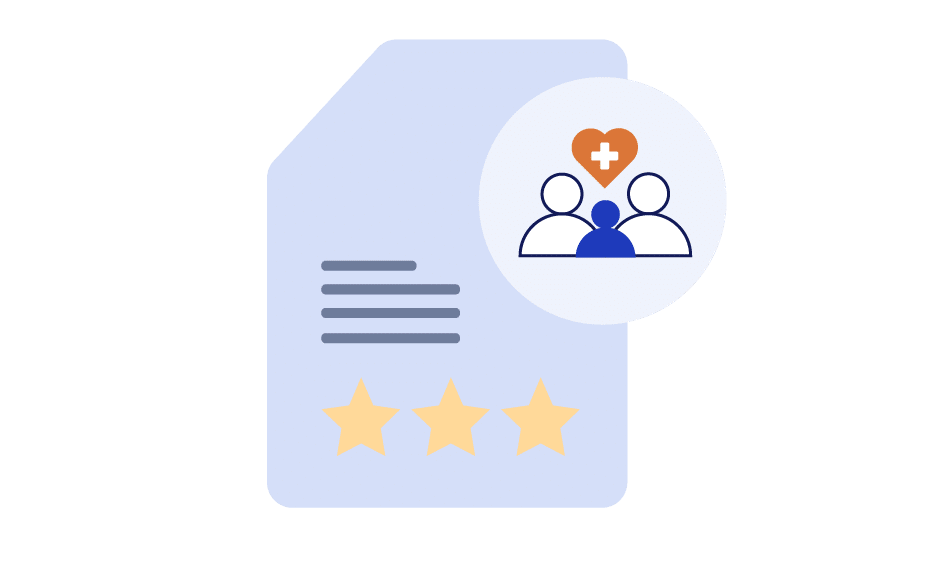
Hospitalizations and worsening outcomes are another key quality metric frequently tied to referrals, reimbursements, and value-based care arrangements. Agencies can use incident reporting data and predictive risk models to alert clinical management of patient risks, while home-based care businesses can improve outcome metrics and increase their bottom line.
Continuity of care is another valuable metric that helps achieve client-caregiver chemistry. By holistically examining how clients and their caregivers connect, you can better understand the ideal matchup.
Bien Chez Soi is a successful home care franchise founded in 2008. This Canadian provider now counts over 40 locations throughout the province of Quebec. Bien Chez Soi has spent the past five years capturing the correct data and using it to improve services, forecasts, trends, and scale.
“The ability to create custom reports to analyze the issues you want to prioritize is important. Find a software system that easily enables you to build these reports.”
Here is some advice on the effective use of data, courtesy of Ashley McLellan, VP of Operations:
Contract sign rates are valuable in quantifying how long it takes for a new client to translate into a closed deal, creating percentages over time. You can generate closing rates from here, which are fantastic for forecasting. If one location/franchise takes ten days to close a contract and has a closing rate of 25%, you can start to see what percentage of leads will get closed. Then, consider how many employees you’ll need to recruit to meet growing needs.
The month-over-month or year-over-year numbers can reveal stories across departments and overall business growth. You invested X% in marketing – has that translated into more sales in the months afterward? Are employee satisfaction rates changing? How do they compare to churn rates? Down the list, you can track growth over time on any metric you collect.
Read more about the key learnings around using data from Ashley McLellan in our guide, How to make the most of your home-based care data.
Key takeaways – Chapter 4
Continued improvement through data-driven insights
In a home care environment, proactive monitoring of employee turnover and client satisfaction is crucial. Utilizing software systems like AlayaCare helps detect early signs of issues, tailor mitigation strategies, and monitor the quality of care.
Agencies can leverage data from their own incident reporting and predictive risk models to alert their clinical management teams when a patient is at risk of a negative event. Improving outcome performance metrics can directly affect their business’s bottom line.
A successful home care franchise, Bien Chez Soi, emphasizes capturing the correct data to improve services, forecasts, and scaling. They highlight contract sign rates, growth patterns, and the effectiveness of investments.

Learn how AlayaCare’s Cloud Software can help home-based care organizations do more with less
- Our user-friendly interface and in-depth training resources minimize caregivers’ learning curves, promoting job satisfaction and reducing turnover rates.
- Real-time access to client data enables caregivers to deliver personalized, effective care – leading to improved health outcomes and client satisfaction.
- From scheduling to billing, AlayaCare streamlines management tasks. The result? More time to focus on what matters most-providing exceptional care
With AlayaCare, you’re not just collecting data but harnessing it. Our software provides actionable insights, enabling providers to make informed decisions for continuous improvement.
About AlayaCare
AlayaCare is the proud provider of revolutionary cloud-based home-based care software. Our mission is to give care providers the tools they need to achieve better health outcomes by helping to streamline their workflow so that they can focus on what’s truly important. With a team of dedicated experts working to change the home-based care industry for the better, our clients count on us to offer personalized software and expertise that will result in better outcomes and a stable path into the future.
Ready to start? Book a demo and speak to an expert
See how AlayaCare can help your organization first-hand with a demo that will show you the benefits of our platform and answer all your questions.
Learn how AlayaCare’s Cloud Software can help home-based care organizations do more with less.
Our user-friendly interface and in-depth training resources minimize the learning curve for caregivers, promoting job satisfaction and reducing turnover rates.
Real-time access to client data enables caregivers to deliver personalized, effective care — leading to improved health outcomes and client satisfaction.
From scheduling to billing, AlayaCare streamlines management tasks. The result? More time to focus on what matters most—providing exceptional care
With AlayaCare, you're not just collecting data—but harnessing it. Our software provides actionable insights, enabling providers to make informed decisions for continuous improvement.
About AlayaCare
AlayaCare is the proud provider of revolutionary cloud-based home-based care software. Our mission is to give care providers the tools they need to achieve better health outcomes by helping to streamline their workflow so that they can focus on what’s truly important. With a team of dedicated experts working to change the home-based care industry for the better, our clients count on us to offer personalized software and expertise that will result in better outcomes and a stable path into the future.
Let's Talk
Ready to start? Book a demo and speak to an expert
See how AlayaCare can help your organization first-hand with a demo that will show you the benefits of our platform and answer all your questions.
